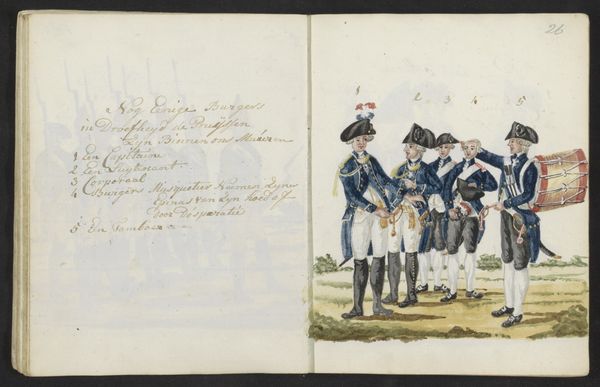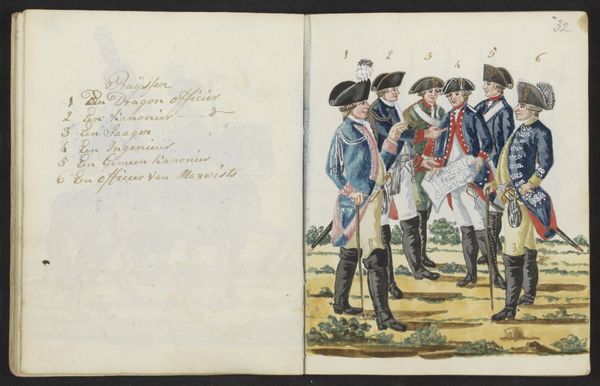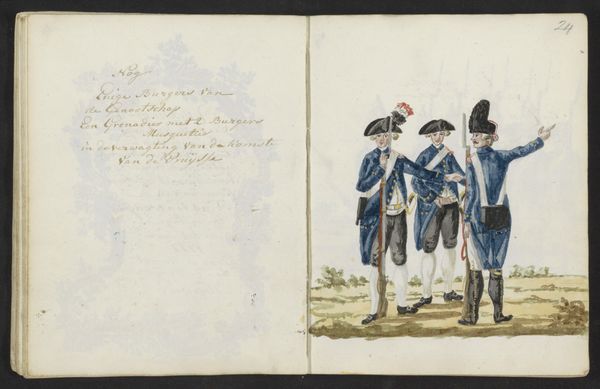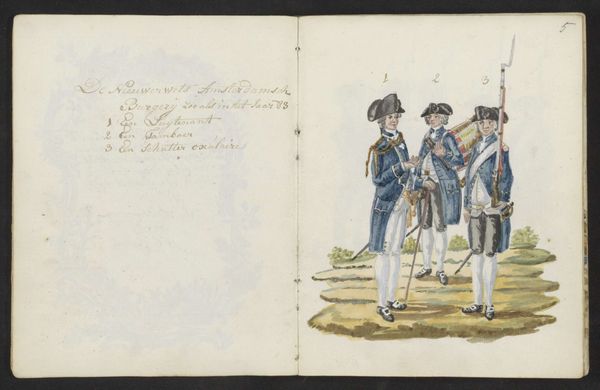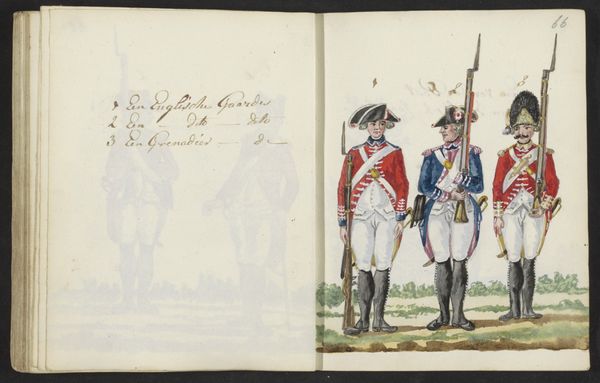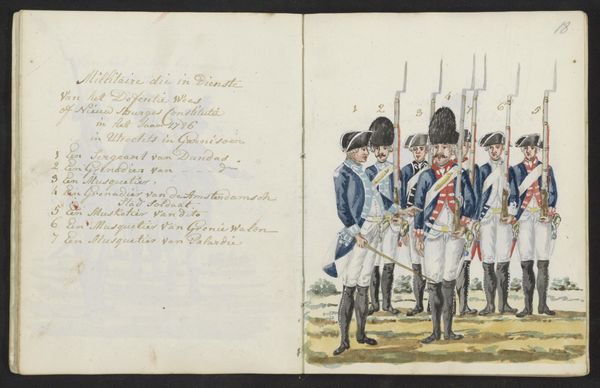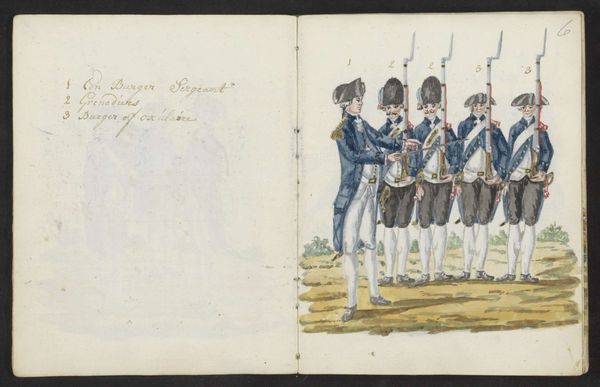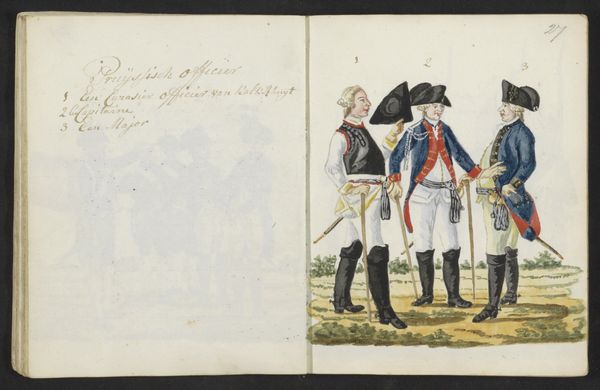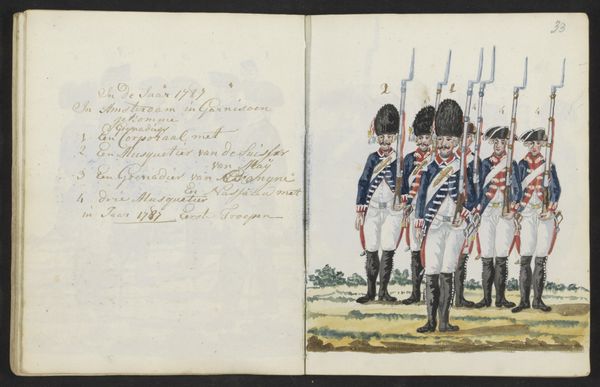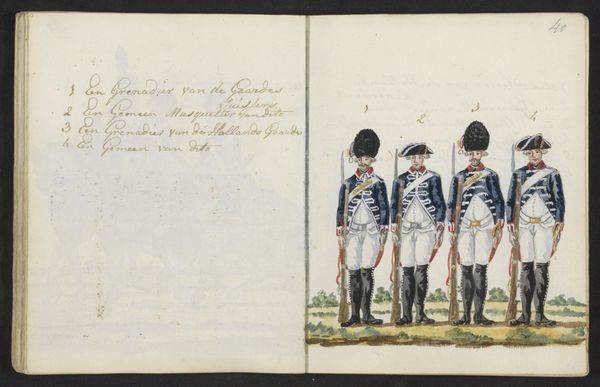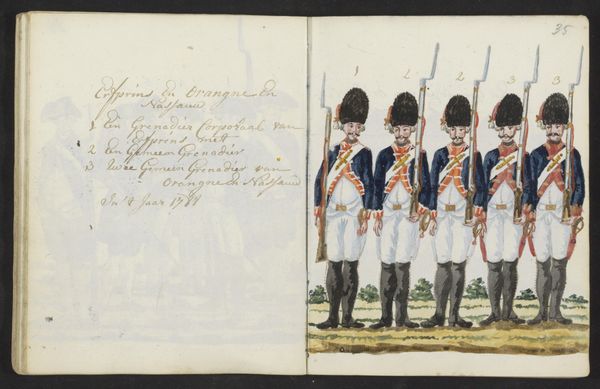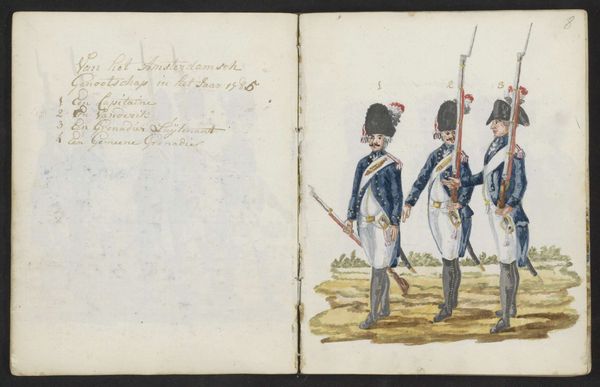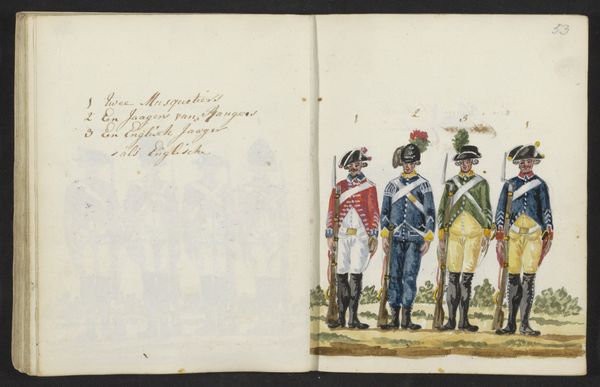
drawing, watercolor
#
portrait
#
drawing
#
watercolor
#
coloured pencil
#
history-painting
#
watercolor
Dimensions: height 197 mm, width 310 mm
Copyright: Rijks Museum: Open Domain
Curator: Looking at this delicate drawing, rendered in watercolor and coloured pencil, I’m immediately struck by the stiffness of the figures. Editor: This piece, "Uniformen van de nieuwe Amsterdamse schutterij in 1787," or "Uniforms of the New Amsterdam Militia in 1787," by S.G. Casten, offers a glimpse into the sartorial presentation of civic guards at a tumultuous time in Dutch history. It likely dates to 1795-96. Curator: Yes, it's quite stiff. Each figure seems consciously posed, like puppets almost, yet there’s also a great attention to detail, especially in their uniforms. They communicate so much, from status to allegiance. Are they meant to project authority? Editor: Absolutely. These uniforms project authority and a certain political stance. These Schutters, or civil guard, were crucial in maintaining order, especially during the Patriot and Orangist conflict of the late 18th century. It’s interesting the way Casten meticulously records the specificities of each uniform and that of course would have very real public consequences. Curator: You see the psychology inherent in these details, the way uniform can communicate power structures in the space, too? Notice the subtle distinctions – the officer’s more elaborate detailing versus the common guard's simpler attire. That kind of coded image speaks volumes, it creates hierarchy. And it shapes behavior in a society that has continuity between them. Editor: Exactly! This drawing acts as a social record, displaying how visual symbols cemented socio-political hierarchies. Each element -- the cut of a coat, the presence or absence of specific ornamentation-- becomes a piece of propaganda, almost. The image acts as an indicator in history that is easily understood and internalized through these materials and codes. Curator: So true, it gives continuity through shared iconography to groups of individuals who internalize it over generations. It's intriguing how Casten captures this, transforming fabric into emblems of authority. There's a reason we still rely on archetypes and iconography that date back centuries, like it. It is embedded in how our culture views the space we exist in! Editor: Indeed. Casten's drawing illuminates how meticulously crafted symbols shape identity and exert social control. Seeing this image really highlights the fact that the Dutch Republic was so concerned with order and the appearance of political strength at the close of the eighteenth century, especially in the wake of revolutions. Curator: Ultimately, this small-scale work carries immense weight by distilling a moment of societal tension through the careful rendering of uniforms. Editor: Precisely. It prompts us to consider how dress acts as a visual shorthand for political allegiance, with potentially serious repercussions during this period of instability.
Comments
No comments
Be the first to comment and join the conversation on the ultimate creative platform.
